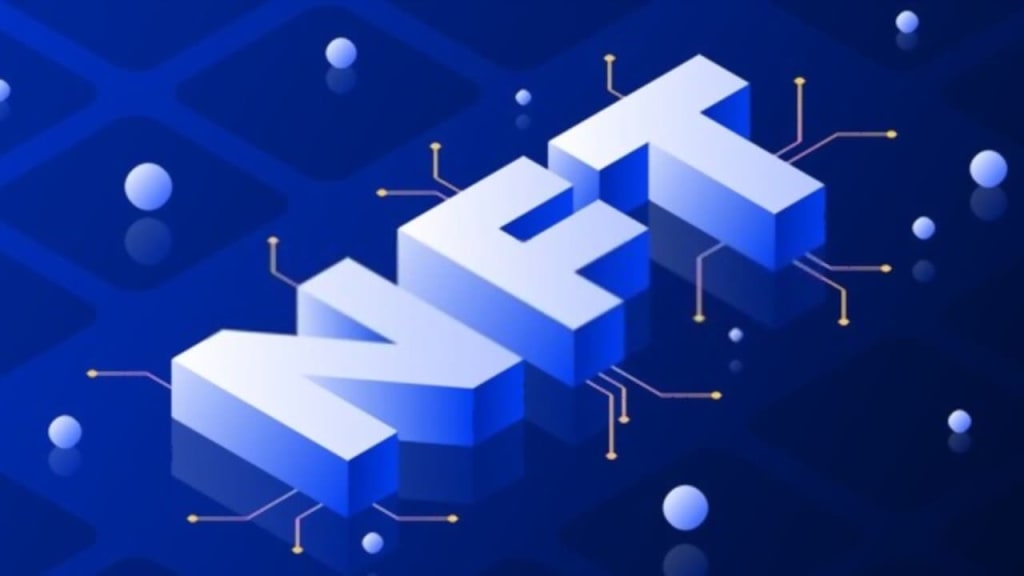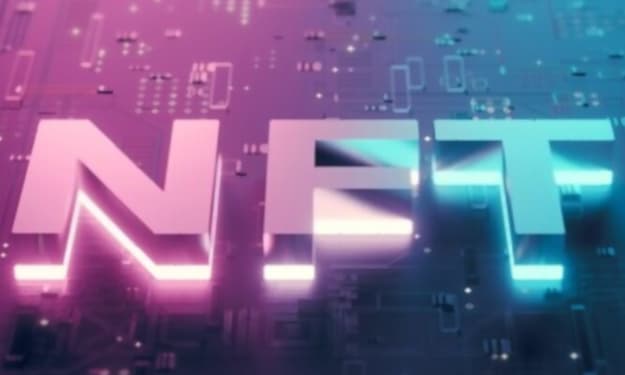How To Create An NFT: A Step-By-Step Guide For Beginners
4 Powerful Steps To Create Your Own NFT And Enter The Market

NFT (Non-Fungible Token) is a type of cryptocurrency asset that represents a unique digital asset or item. Unlike other cryptocurrencies such as Bitcoin or Ethereum, which are fungible and interchangeable, each NFT is one-of-a-kind and cannot be replicated or duplicated.
NFTs are stored on a blockchain, typically the Ethereum blockchain, which provides a decentralized and secure way to verify ownership and transfer of the asset. The use of blockchain technology also ensures the authenticity and provenance of the asset, which is important for digital art, collectibles, and other unique items.
NFT development involves creating a smart contract on the blockchain that defines the unique characteristics of the asset, such as its name, description, and any other metadata. The smart contract also includes the rules for transferring ownership and any royalties or fees that are associated with the asset.
Developers can create NFTs for a variety of digital assets, including art, music, videos, virtual real estate, and more. NFTs have gained popularity in the art world as a way for artists to monetize their digital creations and for collectors to own and trade unique pieces.
The development of NFTs requires expertise in blockchain technology, smart contract development, and cryptocurrency. There are several tools and platforms available to simplify the process of creating and managing NFTs, including OpenSea, Rarible, and SuperRare.
A Survey Of The NFT Marketplace
The NFT marketplace is a rapidly growing sector of the cryptocurrency industry, with a wide range of use cases and applications. Here are some key insights into the current state of the NFT marketplace:
- Popularity: NFTs have gained significant popularity in recent years, particularly in the art and gaming industries. In 2021 alone, the NFT market saw over $10 billion in sales, with digital art and collectibles making up the majority of transactions.
- Use Cases: NFTs can be used to represent a wide range of digital assets, including artwork, music, videos, virtual real estate, and more. Some popular examples include the sale of digital artwork by Beeple for $69 million and the purchase of the virtual real estate in Decentraland for over $900,000.
- Platforms: There are several platforms available for buying and selling NFTs, with OpenSea being the largest and most popular. Other platforms include Rarible, SuperRare, Nifty Gateway, and more.
- Ethereum dominance: The majority of NFTs are currently being developed and traded on the Ethereum blockchain, due to its robust smart contract capabilities and large developer community. However, other blockchains such as Solana and Binance Smart Chain are also gaining traction in the NFT space.
- Challenges: The NFT marketplace is not without its challenges, including concerns over environmental impact due to the energy-intensive mining process of some cryptocurrencies, the potential for fraudulent activity, and the lack of regulation and standardization in the industry.
Overall, the NFT marketplace is a dynamic and rapidly evolving space with significant potential for growth and innovation in the coming years.
Types of NFTs
There are many types of NFTs (Non-Fungible Tokens) that can be created and traded on the blockchain. Here are some of the most common types:
- Digital Art: Digital art NFTs are one of the most popular types of NFTs. They can represent anything from digital drawings and animations to 3D models and virtual reality experiences.
- Collectibles: NFTs can also be used to represent unique collectibles, such as trading cards, rare in-game items, and other virtual items that have value to collectors.
- Music: NFTs can be used to represent ownership rights to music or albums, allowing fans to own a piece of their favorite artist's work.
- Domain Names: NFTs can be used to represent ownership of domain names on the blockchain, allowing individuals to buy and sell valuable web addresses.
- Virtual Real Estate: NFTs can be used to represent ownership of the virtual real estate in online worlds such as Decentraland, allowing users to buy and sell virtual land and buildings.
- Event Tickets: NFTs can be used to represent ownership of event tickets, providing a secure and transparent way for fans to purchase and sell tickets to concerts, sporting events, and more.
- Identity: NFTs can also be used to represent identity and personal data, allowing individuals to securely store and manage their personal information on the blockchain.
These are just a few examples of the many types of NFTs that can be created and traded on the blockchain. As the technology continues to evolve, new use cases for NFTs will likely emerge.
In-depth Guide On How To Create An NFT
Creating an NFT (Non-Fungible Token) can be a complex process, but there are several tools and platforms available to simplify the process. Here is an in-depth guide on how to create an NFT:
Step 1: Choose a Blockchain Platform
The first step in creating an NFT is to choose a blockchain platform to build it on. The most common platform is Ethereum, but there are other platforms available, such as Binance Smart Chain, Flow, and others.
Step 2: Set Up a Wallet
To create an NFT, you will need a digital wallet that supports the blockchain platform you have chosen. Popular wallets for Ethereum include MetaMask, MyEtherWallet, and Trust Wallet. Each wallet will provide you with a unique address that you will use to send and receive digital assets on the blockchain.
Step 3: Mint Your NFT
To mint an NFT, you will need to create a smart contract that defines the properties of your NFT, such as its name, description, image, and other metadata. You can create a smart contract using Solidity, a programming language for Ethereum smart contracts, or you can use a tool like OpenZeppelin to create a pre-built contract.
Once you have created your smart contract, you will need to deploy it to the blockchain using a service like Remix, Truffle, or Hardhat. This will create a unique address for your NFT on the blockchain, which can then be used to mint new tokens.
Step 4: Add Metadata
After you have minted your NFT, you will need to add metadata to your NFT that describes its characteristics, such as its name, description, and image. This metadata can be stored on the blockchain using the InterPlanetary File System (IPFS), a peer-to-peer network for storing and sharing files.
Step 5: List Your NFT on a Marketplace
Once your NFT is created and has metadata, you can list it for sale on a marketplace like OpenSea, Rarible, or SuperRare. These marketplaces allow buyers to search for and purchase NFTs and provide a platform for artists and creators to sell their digital assets.
When listing your NFT on a marketplace, you will need to provide a price and set any rules for how the NFT can be transferred or used. You may also be required to pay a fee to the marketplace for listing your NFT.
In conclusion, creating an NFT involves choosing a blockchain platform, setting up a wallet, creating and deploying a smart contract, adding metadata, and listing your NFT for sale on a marketplace. With the right tools and knowledge, anyone can create an NFT and participate in the growing world of digital assets.
Conclusion
NFTs (Non-Fungible Tokens) have become a popular way to represent and trade unique digital assets on the blockchain. From digital art and collectibles to virtual real estate and event tickets, NFTs can represent a wide range of assets that have value to collectors and enthusiasts.
Creating an NFT can be a complex process, but with the right tools and knowledge, anyone can participate in this growing market. The process involves choosing a blockchain platform, setting up a wallet, creating and deploying a smart contract, adding metadata, and listing your NFT for sale on a marketplace.
As the technology behind NFTs continues to evolve, we will likely see new use cases and applications for this technology. NFTs provide a secure and transparent way to represent ownership and transfer of digital assets, and they have the potential to revolutionize the way we think about ownership and value in the digital world.
About the Creator
Geetika Chara
A passionate content writer actively working at NFT Development Services. I'm really interested to write Non-fungible Token Development blogs or articles to explore.
Enjoyed the story? Support the Creator.
Subscribe for free to receive all their stories in your feed. You could also pledge your support or give them a one-off tip, letting them know you appreciate their work.






Comments
There are no comments for this story
Be the first to respond and start the conversation.